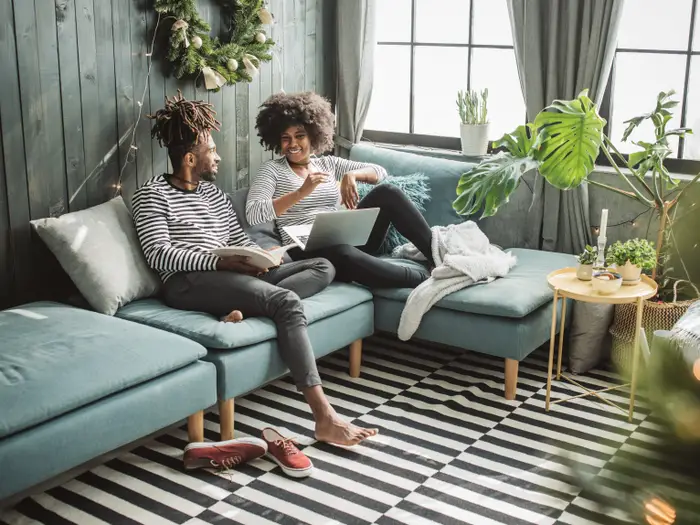How to Decorate Your Home for a Calm and Relaxing Atmosphere
Creating a home that exudes calm and relaxation is essential in today’s fast-paced world. Your living space should be a sanctuary where you can unwind, recharge, and escape the stresses of daily life. Achieving this doesn’t necessarily require a major renovation; thoughtful decor choices can make all the difference. From selecting soothing colors to incorporating natural elements, your home can become a haven of peace.
A calming atmosphere starts with intentionality. Every item in your space should serve a purpose, either functional or emotional. When you declutter and focus on simplicity, you create a space that allows your mind to breathe. Additionally, tapping into sensory design elements—sight, sound, smell, and touch—can enhance relaxation and tranquility.
This guide will walk you through practical, evidence-based strategies to transform your home into a calming retreat. With insights from interior designers and personal anecdotes, you’ll learn how to curate a space that promotes peace and well-being.

Choosing the Right Colors for a Serene Environment
The colors in your home have a profound impact on your mood and energy levels. To create a tranquil atmosphere, it’s important to choose the right palette.
- Soothing Neutrals: Shades like beige, soft gray, and white are universally calming. They create a clean, uncluttered backdrop that promotes relaxation. Consider pairing these neutrals with subtle accents for visual interest.
- Nature-Inspired Hues: Earth tones such as sage green, sky blue, and warm taupe mimic the calming effect of nature. These colors work well in bedrooms and living areas to evoke serenity.
- Avoid Overstimulation: Bright, bold colors like red or neon hues can be jarring. Use them sparingly, such as in artwork or small accessories, to avoid overwhelming the space.
- Practical Tips: Try a paint sample before committing to a color. Natural light affects how colors appear at different times of the day.
Incorporating Natural Elements into Your Decor
Nature has a grounding effect, making it an essential element in any relaxing home. Biophilic design, which integrates nature into interior spaces, has been shown to reduce stress and improve well-being.
- Indoor Plants: Adding greenery such as ferns, snake plants, or pothos can purify the air and create a calming vibe. If you’re not a plant expert, start with low-maintenance options.
- Natural Materials: Furniture and decor made from wood, stone, rattan, or bamboo bring warmth and texture to your space. Consider items like wooden coffee tables or woven baskets.
- Water Features: A small indoor fountain or tabletop water feature can introduce the soothing sound of flowing water, which has a meditative effect.
- Personal Story: I once added a collection of succulents to my home office. Not only did it brighten the room, but it also made me feel more grounded during stressful workdays.
Lighting for Relaxation and Comfort
Lighting is one of the most overlooked aspects of home decor, yet it plays a crucial role in setting the mood.
- Layered Lighting: Combine ambient, task, and accent lighting to create a balanced and versatile space. Use dimmers to adjust the brightness based on your needs.
- Warm vs. Cool Light: Warm lighting (yellow tones) is ideal for relaxation areas like bedrooms and living rooms, while cooler tones (white light) work well in functional spaces like kitchens.
- Natural Light: Maximize natural light by using sheer curtains and strategically placing mirrors to reflect sunlight. Exposure to daylight can boost your mood and regulate sleep patterns.
- Expert Insight: Interior designer Sarah Collins explains, “Lighting should mimic the sun’s natural cycle. Warm tones in the evening help signal to your brain that it’s time to unwind.”
Decluttering and Organizing for Mental Clarity
Clutter-free space contributes significantly to a calm environment. When your surroundings are organized, it reduces visual noise and mental stress.
- Minimalist Mindset: Adopt a “less is more” philosophy. Keep only items that serve a purpose or bring joy.
- Storage Solutions: Invest in stylish storage options like ottomans with hidden compartments or decorative boxes to keep items out of sight.
- Decluttering Process: Tackle one room at a time. Start with high-impact areas like your bedroom or living room.
- Resource: Use the KonMari Method® to decide what to keep and discard. Marie Kondo’s principles can help transform your space and mindset.
Personalizing Your Space for Emotional Comfort
Your home should reflect your personality and bring you joy. Adding personal touches creates a sense of belonging and warmth.
- Meaningful Decor: Display family photos, travel souvenirs, or heirlooms that evoke positive memories.
- Aromatherapy: Scent has a powerful impact on emotions. Use essential oil diffusers or scented candles with calming scents like lavender or eucalyptus.
- Comfortable Textiles: Soft throws, plush rugs, and cozy cushions can make your space inviting and snug.
- Testimonial: Blogger Emily Hart shares, “When I added a gallery wall with photos from my travels, it transformed my living room into a space that tells my story.”
Conclusion
Decorating your home for a calm and relaxing atmosphere is a journey that combines intentional design with personal expression.
By focusing on soothing colors, natural elements, and thoughtful lighting, you can create a sanctuary that nurtures your well-being.
Decluttering and personalizing your space further enhance its comfort and functionality. Start small, implement these tips, and watch as your home becomes a true haven of peace and tranquility.





